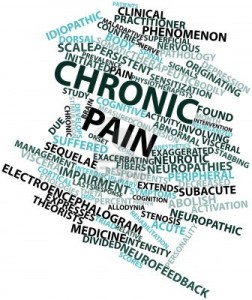 An essential question: What is the difference between acute and chronic pain.
An essential question: What is the difference between acute and chronic pain.
One of the biggest misunderstandings about chronic pain is that it is related to damage, infection or inflammation at the site where the pain is experienced.
Acute and chronic pain are two separate disease entities. Why acute pain in some people transitions to chronic pain is currently the subject of intense research. Chronic pain is more than tissue damage. It is a multidimensional experience generated by brain and nervous system processes (called the pain matrix).
The old paradigm is that pain is always linked to tissue damage. The new paradigm is that it is a brain-derived experience often referred to as central sensitisation.
Acute pain is assessed and treated using a biomedical model where the aim is to discover the source of tissue damage, remove it or suppress the pain response. This biomedical model is not sufficient or effective for chronic pain.
When pain becomes chronic it is viewed as a distinct medical condition and requires a different approach to treatment. The disease of chronic pain is not just acute pain that has gone on for a long time.
For any individual, it is a challenge to understand the difference between acute and chronic pain. This challenge can be stressful.
An essential question: Is it in my head?
The most essential question is often “Is it in my head?”. Many individuals with chronic pain have either been told directly or it has been inferred that their pain is due to psychological processes and that it is not “real”. The direct answer to this essential question is, yes. It is in the head because that’s where the brain is. Chronic pain is a brain and nervous system derived experience that cam impact on every aspect of living.
There are a diverse range of health practitioners and scientists involved in researching pain science and how the brain registers pain. To understand pain science requires the exploration of all the dimensions of what it is to be human. This is to understand the biology of the pain system, the psychology of an individual that generates beliefs, thoughts and feelings and the social environmental impact on the experience of pain which is unique to everyone.
The challenge for each individual is to determine their own unique biopsychosocial drivers of the pain system. Understanding this is the gateway to obtaining the best pain treatments
Treatment
Often the first step in pain treatment which it promoted by the Internet, marketing, and society, in general, is to do things to escape the pain. Medications and unhealthy behaviours that in the short term induce a calming response and a way to feel better in the moment. Ultimately these strategies such as drugs, alcohol, sugary foods and other addictions create further problems.
It is when we recognise these short-term solutions do not address the underlying problem that we can begin to adopt strategies that will move us in the desired direction.
This process begins with understanding the pain experience.
In 1979 Dr John Loeser said
“Physicians and patients usually harbour a concept of pain that involves a linkage between body damage and the pain reported by the patient. This is an inadequate concept that leads both physicians and their patients into unnecessary difficulties in the management of chronic pain.”
Understanding the difference between acute and chronic pain makes all the difference in the approach to treatment.
Developing the skills and a commitment to training in whole body and consciousness practices is a now proven pathway to living well with and overcoming pain. To review these practices follow this link the Pathways To Wellbeing.
